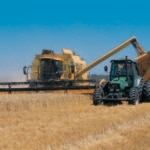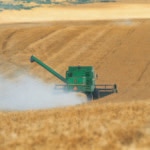Record level harvests are back, along with an endless demand for food
Agriculture has become the driver of the Argentine economy. Heavy investment in infrastructure (roads, trains, hydraulic construction) will help to improve costs, opening the road to a growth which seems infinite, thanks to a persistent and solid demand.

The agricultural industry is once again the most dynamic sector of the Argentine economy. The changes in the macroeconomic environment since President Mauricio Macri took office in December 2015 established a new framework. The farm sector reacted swiftly, leading to a significant increase in production, investment and domestic consumption.
Strictly speaking, since the mid-1990s, Argentina’s agriculture industry was engaged in a period of major technological and organizational change. A new generation of farmers and the massive emergence of new tools translated into a succession of record harvests, year after year.
Despite the severe weather, record level harvests returned, a livestock rebuilding process was started and all activities experienced growth"
Between 1990 and 1995, total agricultural production averaged around 45 million tons, of which 15 tons were soy and 30 tons, grains (mainly corn and wheat).
In 1996, genetically-modified soy was released into the market and began to take off, little by little becoming a new manna raining down onto the Argentine pampa. By the year 2000, overall farm production had soared to more than 60 million tons – 20 million tons of which were soy.
This whole process was stimulated by an improvement in the international market at the beginning of the 21st Century.

The agricultural industry has reacted to President Macri's policies by increasing production, investment and consumption.
After several decades of low prices from agricultural surpluses - created by subsidies and the protectionism of the most developed countries - prices surprisingly skyrocketed to unprecedented levels. This was the result of two major factors: the “dietary transition” in Asian societies (particularly in China) and higher oil prices.
Dietary transition
When a society’s income levels rise, it doesn’t eat more, it eats differently. It goes from a diet based on starch (rice, wheat, beans) to one with more animal protein. The meats are produced from grains, but this process is inefficient, requiring five to ten times more resources than the production of grains for direct human consumption.
The growth of China’s demand for animal protein was exponential, bringing along with it the growth in the consumption of vegetable proteins (soy) and feed grains (corn, barley, non-bread wheat, etc.).
The oil issue
Oil had a similar story. Rising income led to soaring energy consumption. At the beginning of the century, oil cost $20 a barrel. Its price rose fivefold, surpassing $100. Agricultural prices rose along with it, as gas and diesel could be replaced by two new alternatives: ethanol and biodiesel.
The combined effect of these two drivers was the rapid consumption of agricultural excesses and the arrival of a period of relative scarcity.
All of the sudden, a market that had more sellers than buyers became one with more buyers than sellers.
On a local level, this new situation led to a period of rapid expansion for the farmers. However, everything started to slow down in 2008.
Problems of competitivity remain, especially in the so-called “regional economies,” due to their remote ports and labor costs"
Higher export duties, the exchange rate breakdown and restrictions on exports - on the understanding that this would mean a greater supply of food for Argentines’ tables - all curbed the farm sector´s growth.
In the first week of the Macri administration, these factors were removed. Only export duties on soy remained, at a lower level.
The sector immediately got back to where it had left off. Today, it shows enormous strength and has become the engine that drives the entire economy.